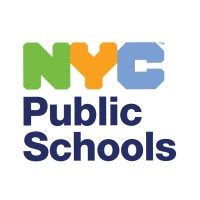
South Washington County Schools Company Cyber Security Posture
sowashco.orgSouth Washington County Schools (SoWashCo Schools) is a premiere school district located east of St. Paul, encompassing all or parts of Cottage Grove, Newport, St. Paul Park, Woodbury, and Afton, Denmark and Grey Cloud Island Townships. More than 18,400 students attend the district’s 16 elementary schools, four middle schools, three high schools and alternative high school, making the district the sixth-largest in Minnesota. The district also includes Community Education which provides programs and services for learners of all ages, from birth through retirement. A variety of choice programing offerings are available at district schools ranging from multiage and gifted education to STEM courses and a K-12 Spanish Immersion pathway. SoWashCo Schools works to ignite a passion for lifelong learning through personalization and creating a positive climate and culture for all. We are a great place to work: o High quality of teaching staff o Supportive Administration o Dedicated parent, neighborhood and communities o Growing Student Enrollment o Professional development opportunities We offer competitive pay and a full benefit package to ensure our employees and their families enjoy a healthy and secure lifestyle, including: o Health Insurance o Dental Insurance o Long-term Disability o Basic, Supplemental and Dependent o Life Insurance o 403B Matching o Minnesota PERA Contributions or TRA *Benefit eligibility is based upon individual position status.
SWCS Company Details
sowashcoschools
1204 employees
2700
611
Primary and Secondary Education
sowashco.org
Scan still pending
SOU_2600802
In-progress
Between 800 and 900
This score is AI-generated and less favored by cyber insurers, who prefer the TPRM score.
 SWCS Global Score
SWCS Global Score.png)

South Washington County Schools Company Scoring based on AI Models
| Model Name | Date | Description | Current Score Difference | Score |
|---|---|---|---|---|
| AVERAGE-Industry | 03-12-2025 | This score represents the average cybersecurity rating of companies already scanned within the same industry. It provides a benchmark to compare an individual company's security posture against its industry peers. | N/A | Between 800 and 900 |
South Washington County Schools Company Cyber Security News & History
| Entity | Type | Severity | Impact | Seen | Url ID | Details | View |
|---|---|---|---|---|---|---|---|
| South Washington County Schools | Cyber Attack | 85 | 4 | 02/2017 | SOU2267622 | Link | |
Rankiteo Explanation : Attack with significant impact with customers data leaksDescription: The South Washington County school district was targeted in a cyberattack in February 2017. The compromised information included the district’s server, names, Social Security numbers, and some addresses. Files for more than 15,000 people were downloaded, and 478 people actually had their files opened. The district offered free identity theft monitoring to the 478 people whose data was accessed and an informational guide to handling identity theft. | |||||||
| South Washington County Schools | Data Leak | 60 | 3 | 08/2017 | SOU112181122 | Link | |
Rankiteo Explanation : Attack with significant impact with internal employee data leaksDescription: South Washington County Schools suffered from a massive data breach incident after the accidental release of private student information sent out in an email attachment from the district’s transportation department. The exposed information includes names, grades, identification numbers, email addresses, mailing addresses, phone numbers, bus routes, pick up and drop off times, pick up and drop off locations, and schools of attendance for some 9,000 students. They asked who so ever received the email to delete the attachment and not forward it. | |||||||
South Washington County Schools Company Subsidiaries

South Washington County Schools (SoWashCo Schools) is a premiere school district located east of St. Paul, encompassing all or parts of Cottage Grove, Newport, St. Paul Park, Woodbury, and Afton, Denmark and Grey Cloud Island Townships. More than 18,400 students attend the district’s 16 elementary schools, four middle schools, three high schools and alternative high school, making the district the sixth-largest in Minnesota. The district also includes Community Education which provides programs and services for learners of all ages, from birth through retirement. A variety of choice programing offerings are available at district schools ranging from multiage and gifted education to STEM courses and a K-12 Spanish Immersion pathway. SoWashCo Schools works to ignite a passion for lifelong learning through personalization and creating a positive climate and culture for all. We are a great place to work: o High quality of teaching staff o Supportive Administration o Dedicated parent, neighborhood and communities o Growing Student Enrollment o Professional development opportunities We offer competitive pay and a full benefit package to ensure our employees and their families enjoy a healthy and secure lifestyle, including: o Health Insurance o Dental Insurance o Long-term Disability o Basic, Supplemental and Dependent o Life Insurance o 403B Matching o Minnesota PERA Contributions or TRA *Benefit eligibility is based upon individual position status.
Access Data Using Our API

Get company history
.png)
SWCS Cyber Security News
UC Berkeley, WaTech to survey Washington state nonprofits on cybersecurity
Washington state's IT division is teaming up with UC Berkeley to secure the soft spots in the state's nonprofit organizations.
Woodbury: East Ridge teacher on leave following report of racial slur
In a letter sent to families, Principal Jim Smokrovich wrote that he received a report Thursday morning that the staff member used a racial slur ...
School ransomware attacks are on the rise. What can districts do?
An estimated 325 ransomware attacks hit public K-12 schools between April 2016 and November 2022. From that date through Oct. 3 of this year, ...
Washington state school district closed for second day after cyberattack
Washington state school district closed for second day after cyberattack. A Seattle-area school system serving more than 17,000 students is ...
Event Calendar
Date, Time, Event. Jun 5, 3pm, CANCELLED - Economics Prospective Student Info Session. Jun 5, 5pm, Industrial Design Junior Show.
Cyberattack compromises and shuts down Highline Public Schools
On Monday, September 9, 2024, Highline Public Schools in the state of Washington was shut down due to a cyberattack.
US Education Department to cut half its staff as Trump eyes its elimination
The US Department of Education said on Tuesday it would lay off nearly half its staff, a possible precursor to closing altogether.
Ransomware attack throws WA school district back to pre-internet era
The cyberthreat that shut down Highline Public Schools in September was a ransomware attack, district officials announced Thursday.
UPDATED: When are 2025 graduations for Washington County Public Schools in Maryland?
The Boyd J. Michael III Technical High School graduation will be at 6:30 p.m. on Thursday, May 22, in South Hagerstown High's School Stadium.

SWCS Similar Companies

Fairfax County Public Schools
Fairfax County Public Schools (FCPS), located in Northern Virginia, is the nation’s 9th largest public school system, serves a diverse population of more than 180,000 students in grades prekindergarten through 12. Fairfax County high schools are recognized annually by the Washington Post as being am

Austin Independent School District
Austin ISD is a diverse community of more than 10,000 employees, and we recognize that nothing is more essential to a great education system than innovative, talented, passionate educators. Whether you’re a recent graduate or an experienced professional seeking a new career opportunity, AISD has a

NYC Department of Education
The New York City Public Schools is the branch of municipal government in New York City that manages the city's public school system. These schools form the largest school system in the United States, where over 1 million students are taught in more than 1,400 separate schools across the five boroug

Montgomery County Public Schools
Montgomery County Public Schools (MCPS), located in Maryland outside of Washington, D.C., is the largest school district in the state. MCPS has 209 schools and serves a diverse population of more than 160,000 students. MCPS offers competitive salaries and benefits, has a nationally recognized prof

Prince George's County Public Schools
Prince George's County Public Schools (PGCPS), one of the nation's 25 largest school districts, has 200 schools and centers, more than 133,000 students and 22,000 employees. The school system serves a diverse student population from urban, suburban and rural communities located in the Washington, DC

Gwinnett County Public Schools
Gwinnett County Public Schools (GCPS), located in the metro Atlanta area, is the largest school system in Georgia and the 11th largest school district in the country, offering education professionals and support staff endless opportunities to SHINE. GCPS is one of the nation’s top urban school dist

Frequently Asked Questions (FAQ) on Cybersecurity Incidents
SWCS CyberSecurity History Information
Total Incidents: According to Rankiteo, SWCS has faced 2 incidents in the past.
Incident Types: The types of cybersecurity incidents that have occurred include ['Data Leak', 'Cyber Attack'].
Total Financial Loss: The total financial loss from these incidents is estimated to be {total_financial_loss}.
Cybersecurity Posture: The company's overall cybersecurity posture is described as South Washington County Schools (SoWashCo Schools) is a premiere school district located east of St. Paul, encompassing all or parts of Cottage Grove, Newport, St. Paul Park, Woodbury, and Afton, Denmark and Grey Cloud Island Townships. More than 18,400 students attend the district’s 16 elementary schools, four middle schools, three high schools and alternative high school, making the district the sixth-largest in Minnesota. The district also includes Community Education which provides programs and services for learners of all ages, from birth through retirement. A variety of choice programing offerings are available at district schools ranging from multiage and gifted education to STEM courses and a K-12 Spanish Immersion pathway. SoWashCo Schools works to ignite a passion for lifelong learning through personalization and creating a positive climate and culture for all. We are a great place to work: o High quality of teaching staff o Supportive Administration o Dedicated parent, neighborhood and communities o Growing Student Enrollment o Professional development opportunities We offer competitive pay and a full benefit package to ensure our employees and their families enjoy a healthy and secure lifestyle, including: o Health Insurance o Dental Insurance o Long-term Disability o Basic, Supplemental and Dependent o Life Insurance o 403B Matching o Minnesota PERA Contributions or TRA *Benefit eligibility is based upon individual position status..
Detection and Response: The company detects and responds to cybersecurity incidents through {description_of_detection_and_response_process}.
Incident Details
Incident 1: Ransomware Attack
Title: {Incident_Title}
Description: {Brief_description_of_the_incident}
Date Detected: {Detection_Date}
Date Publicly Disclosed: {Disclosure_Date}
Date Resolved: {Resolution_Date}
Type: {Type_of_Attack}
Attack Vector: {Attack_Vector}
Vulnerability Exploited: {Vulnerability}
Threat Actor: {Threat_Actor}
Motivation: {Motivation}
Incident 2: Data Breach
Title: {Incident_Title}
Description: {Brief_description_of_the_incident}
Date Detected: {Detection_Date}
Date Publicly Disclosed: {Disclosure_Date}
Date Resolved: {Resolution_Date}
Type: {Type_of_Attack}
Attack Vector: {Attack_Vector}
Vulnerability Exploited: {Vulnerability}
Threat Actor: {Threat_Actor}
Motivation: {Motivation}
Common Attack Types: As of now, the company has not encountered any reported incidents involving common cyberattacks.
Identification of Attack Vectors: The company identifies the attack vectors used in incidents through {description_of_identification_process}.
Impact of the Incidents
Incident 1: Ransomware Attack
Financial Loss: {Financial_Loss}
Data Compromised: {Data_Compromised}
Systems Affected: {Systems_Affected}
Downtime: {Downtime}
Operational Impact: {Operational_Impact}
Conversion Rate Impact: {Conversion_Rate_Impact}
Revenue Loss: {Revenue_Loss}
Customer Complaints: {Customer_Complaints}
Brand Reputation Impact: {Brand_Reputation_Impact}
Legal Liabilities: {Legal_Liabilities}
Identity Theft Risk: {Identity_Theft_Risk}
Payment Information Risk: {Payment_Information_Risk}
Incident 2: Data Breach
Financial Loss: {Financial_Loss}
Data Compromised: {Data_Compromised}
Systems Affected: {Systems_Affected}
Downtime: {Downtime}
Operational Impact: {Operational_Impact}
Conversion Rate Impact: {Conversion_Rate_Impact}
Revenue Loss: {Revenue_Loss}
Customer Complaints: {Customer_Complaints}
Brand Reputation Impact: {Brand_Reputation_Impact}
Legal Liabilities: {Legal_Liabilities}
Identity Theft Risk: {Identity_Theft_Risk}
Payment Information Risk: {Payment_Information_Risk}
Average Financial Loss: The average financial loss per incident is {average_financial_loss}.
Commonly Compromised Data Types: The types of data most commonly compromised in incidents are {list_of_commonly_compromised_data_types}.
Incident 1: Ransomware Attack
Entity Name: {Entity_Name}
Entity Type: {Entity_Type}
Industry: {Industry}
Location: {Location}
Size: {Size}
Customers Affected: {Customers_Affected}
Incident 2: Data Breach
Entity Name: {Entity_Name}
Entity Type: {Entity_Type}
Industry: {Industry}
Location: {Location}
Size: {Size}
Customers Affected: {Customers_Affected}
Response to the Incidents
Incident 1: Ransomware Attack
Incident Response Plan Activated: {Yes/No}
Third Party Assistance: {Yes/No}
Law Enforcement Notified: {Yes/No}
Containment Measures: {Containment_Measures}
Remediation Measures: {Remediation_Measures}
Recovery Measures: {Recovery_Measures}
Communication Strategy: {Communication_Strategy}
Adaptive Behavioral WAF: {Adaptive_Behavioral_WAF}
On-Demand Scrubbing Services: {On_Demand_Scrubbing_Services}
Network Segmentation: {Network_Segmentation}
Enhanced Monitoring: {Enhanced_Monitoring}
Incident 2: Data Breach
Incident Response Plan Activated: {Yes/No}
Third Party Assistance: {Yes/No}
Law Enforcement Notified: {Yes/No}
Containment Measures: {Containment_Measures}
Remediation Measures: {Remediation_Measures}
Recovery Measures: {Recovery_Measures}
Communication Strategy: {Communication_Strategy}
Adaptive Behavioral WAF: {Adaptive_Behavioral_WAF}
On-Demand Scrubbing Services: {On_Demand_Scrubbing_Services}
Network Segmentation: {Network_Segmentation}
Enhanced Monitoring: {Enhanced_Monitoring}
Incident Response Plan: The company's incident response plan is described as {description_of_incident_response_plan}.
Third-Party Assistance: The company involves third-party assistance in incident response through {description_of_third_party_involvement}.
Data Breach Information
Incident 2: Data Breach
Type of Data Compromised: {Type_of_Data}
Number of Records Exposed: {Number_of_Records}
Sensitivity of Data: {Sensitivity_of_Data}
Data Exfiltration: {Yes/No}
Data Encryption: {Yes/No}
File Types Exposed: {File_Types}
Personally Identifiable Information: {Yes/No}
Prevention of Data Exfiltration: The company takes the following measures to prevent data exfiltration: {description_of_prevention_measures}.
Handling of PII Incidents: The company handles incidents involving personally identifiable information (PII) through {description_of_handling_process}.
Ransomware Information
Incident 1: Ransomware Attack
Ransom Demanded: {Ransom_Amount}
Ransom Paid: {Ransom_Paid}
Ransomware Strain: {Ransomware_Strain}
Data Encryption: {Yes/No}
Data Exfiltration: {Yes/No}
Ransom Payment Policy: The company's policy on paying ransoms in ransomware incidents is described as {description_of_ransom_payment_policy}.
Data Recovery from Ransomware: The company recovers data encrypted by ransomware through {description_of_data_recovery_process}.
Regulatory Compliance
Incident 1: Ransomware Attack
Regulations Violated: {Regulations_Violated}
Fines Imposed: {Fines_Imposed}
Legal Actions: {Legal_Actions}
Regulatory Notifications: {Regulatory_Notifications}
Incident 2: Data Breach
Regulations Violated: {Regulations_Violated}
Fines Imposed: {Fines_Imposed}
Legal Actions: {Legal_Actions}
Regulatory Notifications: {Regulatory_Notifications}
Regulatory Frameworks: The company complies with the following regulatory frameworks regarding cybersecurity: {list_of_regulatory_frameworks}.
Ensuring Regulatory Compliance: The company ensures compliance with regulatory requirements through {description_of_compliance_measures}.
Lessons Learned and Recommendations
Incident 1: Ransomware Attack
Lessons Learned: {Lessons_Learned}
Incident 2: Data Breach
Lessons Learned: {Lessons_Learned}
Incident 1: Ransomware Attack
Recommendations: {Recommendations}
Incident 2: Data Breach
Recommendations: {Recommendations}
Key Lessons Learned: The key lessons learned from past incidents are {list_of_key_lessons_learned}.
Implemented Recommendations: The company has implemented the following recommendations to improve cybersecurity: {list_of_implemented_recommendations}.
References
Additional Resources: Stakeholders can find additional resources on cybersecurity best practices at {list_of_additional_resources}.
Investigation Status
Incident 1: Ransomware Attack
Investigation Status: {Investigation_Status}
Incident 2: Data Breach
Investigation Status: {Investigation_Status}
Communication of Investigation Status: The company communicates the status of incident investigations to stakeholders through {description_of_communication_process}.
Stakeholder and Customer Advisories
Incident 1: Ransomware Attack
Stakeholder Advisories: {Stakeholder_Advisories}
Customer Advisories: {Customer_Advisories}
Incident 2: Data Breach
Stakeholder Advisories: {Stakeholder_Advisories}
Customer Advisories: {Customer_Advisories}
Advisories Provided: The company provides the following advisories to stakeholders and customers following an incident: {description_of_advisories_provided}.
Initial Access Broker
Incident 1: Ransomware Attack
Entry Point: {Entry_Point}
Reconnaissance Period: {Reconnaissance_Period}
Backdoors Established: {Backdoors_Established}
High Value Targets: {High_Value_Targets}
Data Sold on Dark Web: {Yes/No}
Incident 2: Data Breach
Entry Point: {Entry_Point}
Reconnaissance Period: {Reconnaissance_Period}
Backdoors Established: {Backdoors_Established}
High Value Targets: {High_Value_Targets}
Data Sold on Dark Web: {Yes/No}
Monitoring and Mitigation of Initial Access Brokers: The company monitors and mitigates the activities of initial access brokers through {description_of_monitoring_and_mitigation_measures}.
Post-Incident Analysis
Incident 1: Ransomware Attack
Root Causes: {Root_Causes}
Corrective Actions: {Corrective_Actions}
Incident 2: Data Breach
Root Causes: {Root_Causes}
Corrective Actions: {Corrective_Actions}
Post-Incident Analysis Process: The company's process for conducting post-incident analysis is described as {description_of_post_incident_analysis_process}.
Corrective Actions Taken: The company has taken the following corrective actions based on post-incident analysis: {list_of_corrective_actions_taken}.
Additional Questions
General Information
Ransom Payment History: The company has {paid/not_paid} ransoms in the past.
Last Ransom Demanded: The amount of the last ransom demanded was {last_ransom_amount}.
Last Attacking Group: The attacking group in the last incident was {last_attacking_group}.
Incident Details
Most Recent Incident Detected: The most recent incident detected was on {most_recent_incident_detected_date}.
Most Recent Incident Publicly Disclosed: The most recent incident publicly disclosed was on {most_recent_incident_publicly_disclosed_date}.
Most Recent Incident Resolved: The most recent incident resolved was on {most_recent_incident_resolved_date}.
Impact of the Incidents
Highest Financial Loss: The highest financial loss from an incident was {highest_financial_loss}.
Most Significant Data Compromised: The most significant data compromised in an incident was {most_significant_data_compromised}.
Most Significant System Affected: The most significant system affected in an incident was {most_significant_system_affected}.
Response to the Incidents
Third-Party Assistance in Most Recent Incident: The third-party assistance involved in the most recent incident was {third_party_assistance_in_most_recent_incident}.
Containment Measures in Most Recent Incident: The containment measures taken in the most recent incident were {containment_measures_in_most_recent_incident}.
Data Breach Information
Most Sensitive Data Compromised: The most sensitive data compromised in a breach was {most_sensitive_data_compromised}.
Number of Records Exposed: The number of records exposed in the most significant breach was {number_of_records_exposed}.
Ransomware Information
Highest Ransom Demanded: The highest ransom demanded in a ransomware incident was {highest_ransom_demanded}.
Highest Ransom Paid: The highest ransom paid in a ransomware incident was {highest_ransom_paid}.
Regulatory Compliance
Highest Fine Imposed: The highest fine imposed for a regulatory violation was {highest_fine_imposed}.
Most Significant Legal Action: The most significant legal action taken for a regulatory violation was {most_significant_legal_action}.
Lessons Learned and Recommendations
Most Significant Lesson Learned: The most significant lesson learned from past incidents was {most_significant_lesson_learned}.
Most Significant Recommendation Implemented: The most significant recommendation implemented to improve cybersecurity was {most_significant_recommendation_implemented}.
References
Most Recent Source: The most recent source of information about an incident is {most_recent_source}.
Most Recent URL for Additional Resources: The most recent URL for additional resources on cybersecurity best practices is {most_recent_url}.
Investigation Status
Current Status of Most Recent Investigation: The current status of the most recent investigation is {current_status_of_most_recent_investigation}.
Stakeholder and Customer Advisories
Most Recent Stakeholder Advisory: The most recent stakeholder advisory issued was {most_recent_stakeholder_advisory}.
Most Recent Customer Advisory: The most recent customer advisory issued was {most_recent_customer_advisory}.
Initial Access Broker
Most Recent Entry Point: The most recent entry point used by an initial access broker was {most_recent_entry_point}.
Most Recent Reconnaissance Period: The most recent reconnaissance period for an incident was {most_recent_reconnaissance_period}.
Post-Incident Analysis
Most Significant Root Cause: The most significant root cause identified in post-incident analysis was {most_significant_root_cause}.
Most Significant Corrective Action: The most significant corrective action taken based on post-incident analysis was {most_significant_corrective_action}.
What Do We Measure?
















Every week, Rankiteo analyzes billions of signals to give organizations a sharper, faster view of emerging risks. With deeper, more actionable intelligence at their fingertips, security teams can outpace threat actors, respond instantly to Zero-Day attacks, and dramatically shrink their risk exposure window.
These are some of the factors we use to calculate the overall score:
Identify exposed access points, detect misconfigured SSL certificates, and uncover vulnerabilities across the network infrastructure.
Gain visibility into the software components used within an organization to detect vulnerabilities, manage risk, and ensure supply chain security.
Monitor and manage all IT assets and their configurations to ensure accurate, real-time visibility across the company's technology environment.
Leverage real-time insights on active threats, malware campaigns, and emerging vulnerabilities to proactively defend against evolving cyberattacks.




